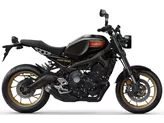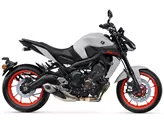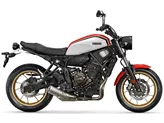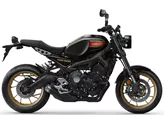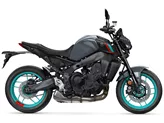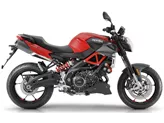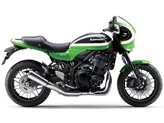Suzuki GSR 750 2017 vs. Yamaha XSR900 2018

Suzuki GSR 750 2017

Yamaha XSR900 2018
Overview - Suzuki GSR 750 2017 vs Yamaha XSR900 2018
In terms of engine specifications, the Suzuki GSR 750 2017 and the Yamaha XSR900 2018 both have inline engines. However, the Yamaha XSR900 has a slightly higher engine power of 115 HP compared to the Suzuki GSR 750's 106 HP. The Yamaha XSR900 also has a higher torque of 87.5 Nm compared to the Suzuki GSR 750's 80 Nm. The Yamaha XSR900 has 3 cylinders while the Suzuki GSR 750 has 4 cylinders. In terms of displacement, the Yamaha XSR900 has a larger engine with 847ccm compared to the Suzuki GSR 750's 749ccm.
In terms of chassis, the Suzuki GSR 750 2017 has a steel frame while the Yamaha XSR900 2018 has an aluminum frame. Both bikes have a twin tube frame type.
Both bikes have double disk brakes at the front. The dimensions and weights of the front and rear tires are the same for both bikes, with a width of 120mm and a diameter of 17 inches.

Suzuki GSR 750 2017
The wheelbase of the Suzuki GSR 750 is slightly longer at 1450mm compared to the Yamaha XSR900's 1440mm. Both bikes have the same seat height of 815mm. The Suzuki GSR 750 is slightly heavier with a kerb weight of 211kg compared to the Yamaha XSR900's 188kg. The fuel tank capacity of the Suzuki GSR 750 is also larger at 17.5 liters compared to the Yamaha XSR900's 14 liters.
In terms of strengths, the Suzuki GSR 750 2017 has an attractive overall appearance with stable handling. The suspension elements have been successfully tuned, providing a comfortable ride. The instruments are easy to read.
On the other hand, the Yamaha XSR900 2018 has an extremely sporty and rev-happy engine. The brakes are excellent, providing a high level of performance. The riding experience is at a naked bike level, and the seating position is pleasant. The bike also has high-quality workmanship and offers a good price-performance ratio.

Yamaha XSR900 2018
However, the Suzuki GSR 750 2017 does have some weaknesses. The brake system requires a lot of manual force, which can be a drawback for some riders. Additionally, the box swingarm is not particularly visually appealing.
Similarly, the Yamaha XSR900 2018 has a few weaknesses. The bike's response can be almost too direct, which may not suit all riders. The retro style of the bike is not thought through to the last detail, which may be a drawback for those looking for a more cohesive design.
Overall, both the Suzuki GSR 750 2017 and the Yamaha XSR900 2018 have their own strengths and weaknesses. It ultimately depends on the rider's preferences and priorities in terms of engine power, handling, comfort, and design.
Technical Specifications Suzuki GSR 750 2017 compared to Yamaha XSR900 2018
Pros and Cons in comparison
Pros and Cons in comparison
Suzuki GSR 750 2017

A razor-sharp design with an aggressive front and narrow rear - just as speedy street raiders have always wanted. It is a pity that the rear swingarm was neglected (officially for weight reasons, unofficially for cost reasons), and the front dual-piston brake system seems a little weak. However, the performance during the ride, both at high speed and in tight corners, is quite good.
Yamaha XSR900 2018

The Yamaha XSR900 is a classic optical illusion - with its round headlight, angular tank and attached tail light, it clearly passes for a retro bike. But it's no coincidence that the performance is reminiscent of the potent mid-range naked bike Yamaha MT-09, which is the extremely sporty basis for the XSR900. So the engine is a blast and the brakes are appropriately venomous. Fortunately, the engineers didn't overdo it with the chassis, the XSR900 offers sufficient comfort and the upright riding position is more comfortable than the powerful engine would lead one to expect. All in all, the XSR900 is one of the sportiest models among the retro bikes.
Price Comparison Avarage Market Price Suzuki GSR 750 vs Yamaha XSR900
There are a few key differences between a Suzuki GSR 750 2017 and a Yamaha XSR900 2018. It takes less time to sell a Suzuki GSR 750 with 117 days compared to 123 days for a Yamaha XSR900. Since model year 2011 1000PS.de editors have written 12 reviews for the Suzuki GSR 750 and 30 reviews for the Yamaha XSR900 since model year 2016. The first review for the Suzuki GSR 750 was published on 05/10/2010 and now has more than 5,400 views. This compares to more than 17,600 views for the first review on Yamaha XSR900 published on 25/11/2015.



